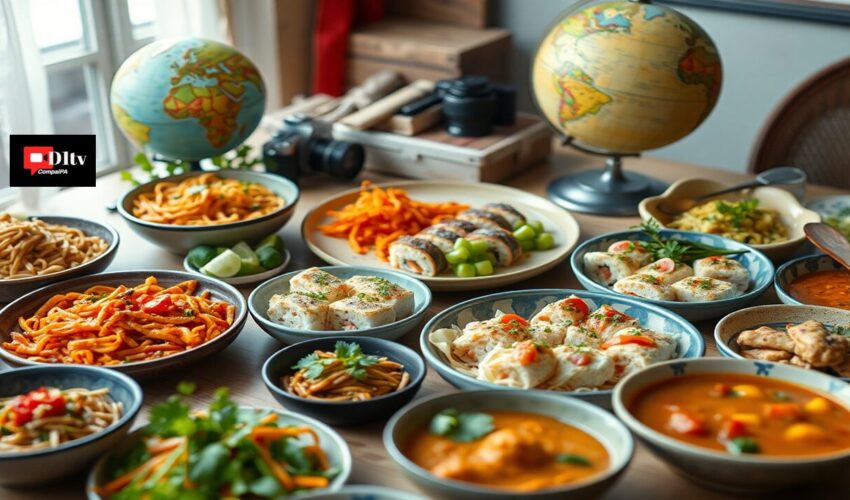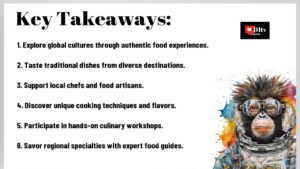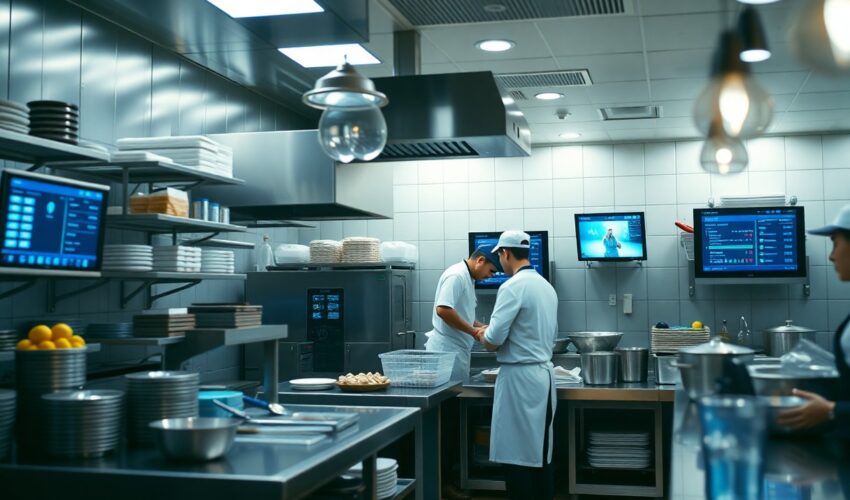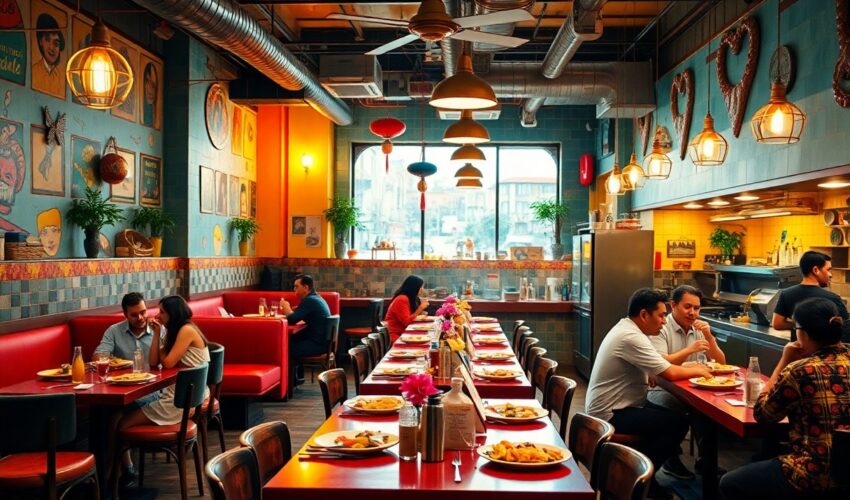Culinary Tourism: Savor the World Through Culinary Vacations
With culinary tourism, you can explore new cultures through their most authentic flavors. Traveling for food allows you to experience unique traditions, local specialties, and hidden dining gems that go beyond typical tourist attractions. Whether you’re savoring street food in Bangkok or indulging in a Michelin-starred meal in Paris, each bite tells a story of heritage and craftsmanship. However, be mindful—some dishes may contain unexpected ingredients or intense spices that challenge your palate. By immersing yourself in local food scenes, you gain a deeper connection to cultures and their culinary secrets, making every journey an unforgettable experience.
Key Takeaways: Culinary Tourism
- Culinary tourism allows travelers to explore different cultures through local food, ingredients, and traditional cooking techniques.
- Food-focused vacations provide opportunities to engage with local chefs, markets, and culinary traditions.
- Destinations known for their cuisine, such as Italy, Japan, and Thailand, are popular choices for culinary travel experiences.
- Cooking classes, food tours, and wine tastings are common activities that enhance the experience of culinary tourism.
- This type of travel supports local farmers, producers, and small businesses, contributing to sustainable tourism.
- Street food and authentic regional dishes offer a deeper connection to a destination’s history and culture.
- Culinary tourism caters to all tastes, from fine dining experiences to hands-on farm-to-table adventures.
Understanding Culinary Tourism
While travel has always been about exploring new places, cultures, and landscapes, culinary tourism takes this experience a step further by focusing on the food and beverages that define a region. Instead of simply indulging in meals, you fully immerse yourself in the traditions, ingredients, and techniques that make each destination unique. Whether it’s savoring authentic street food in Thailand, learning to prepare pasta in an Italian kitchen, or sipping locally brewed sake in Japan, culinary tourism transforms your journey into a sensory adventure.
By engaging with local chefs, farmers, and food markets, you gain deeper insight into the heritage and stories behind each dish. More than just satisfying your appetite, this form of travel fosters cultural exchange and appreciation. The flavors and aromas of a region often reflect its history, geography, and way of life, making every meal a gateway to deeper understanding. This rich connection between food and culture is what sets culinary tourism apart from other travel experiences.

Definition and Key Concepts: Culinary Tourism
About more than just eating well, culinary tourism revolves around exploring a destination through its food scene. It involves seeking out authentic dining experiences, participating in cooking workshops, visiting local markets, and even taking food-themed tours. Unlike casual dining, which may be incidental to travel, this type of tourism places food at the heart of your journey. Every bite becomes an opportunity to discover new flavors, ingredients, and cooking traditions.
At its core, culinary tourism is about authenticity and connection. Travelers seek dishes that reflect local culture rather than mass-produced meals for tourists. This could mean dining in family-run establishments, tasting farm-to-table specialties, or foraging for ingredients with expert guides. The essence of this experience is not just in what you eat but in understanding where the food comes from, who prepares it, and why certain flavors define a region. This personal connection to food creates lasting memories and a deeper appreciation for global culinary diversity.
Explore the world of Culinary Tourism Retreats near you
Historical Development and Modern Trends
On a historical level, food has always been tied to human migration and trade. Ancient spice routes, the Silk Road, and colonial expansion introduced ingredients and cooking techniques across continents. These exchanges shaped many of the regional cuisines you enjoy today. As societies became more connected through trade and exploration, culinary influences blended, creating the diverse food cultures that form today’s destinations for culinary tourism.
Modern culinary tourism has expanded beyond traditional dining and into immersive experiences. Social media, food documentaries, and the farm-to-table movement have increased travelers’ awareness of authentic food experiences. Now, you can find specialized food tours, Michelin-starred restaurant itineraries, and even farm stays where you can harvest your own ingredients. Travelers today demand experiences that go beyond the surface, favoring organic, sustainable, and locally sourced food over mass-produced meals. This shift has also encouraged many countries to promote their culinary heritage as a defining attraction.
Even in the digital age, where globalization has made ingredients and recipes widely available, there’s something irreplaceable about experiencing food where it originates. The smell of fresh spices in a Moroccan market or the taste of handmade tortillas in Mexico connects you to a place in a way that no cookbook or online recipe ever could. The growing demand for experiential travel ensures that culinary tourism will continue to evolve, offering even more opportunities to explore the world through flavors and traditions.
## Types of Culinary Experiences
The world of culinary tourism offers an incredible variety of experiences, allowing you to taste the culture and history of different destinations. Whether you’re hands-on in the kitchen or exploring vibrant street markets, each opportunity brings a deeper connection to local flavors and traditions. The following are some of the most popular types of culinary experiences you can enjoy:
| Experience | What You Gain |
|---|---|
| Cooking Classes and Workshops | Learn authentic recipes and techniques from expert chefs. |
| Food Markets and Street Food Tours | Explore bustling local markets and indulge in traditional dishes. |
| Wine and Spirit Tastings | Sample regional wines and spirits while learning about production. |
| Farm-to-Table Experiences | Visit local farms and enjoy fresh, seasonal ingredients prepared on-site. |
| Gourmet Dining and Michelin-Star Experiences | Dine at world-renowned restaurants and taste the finest cuisine. |
After participating in these experiences, you’ll walk away with enhanced culinary knowledge, unique memories, and a deeper appreciation for food’s role in different cultures.
### Cooking Classes and Workshops
Around the world, cooking classes and workshops provide an immersive way for you to experience local cuisine firsthand. Whether in a professional kitchen or a family home, these experiences offer a perfect balance of hands-on learning and cultural storytelling. You can master the techniques behind famous dishes—like making handmade pasta in Italy or crafting the perfect sushi in Japan—while gaining insights from local chefs who share their culinary heritage.
Cooking classes not only deepen your appreciation for flavors and ingredients but also allow you to bring a piece of your journey home. After attending a workshop, you’ll have the skills to recreate traditional dishes in your own kitchen, keeping the tastes and aromas of your travels alive long after you return.
### Food Markets and Street Food Tours
Classes may teach you how to cook, but food markets and street food tours let you experience the ingredients and dishes in their most authentic setting. Walking through vibrant marketplaces, you’ll encounter fresh produce, aromatic spices, and ready-to-eat delicacies that define the local food scene. These tours offer a chance to taste unique flavors while learning about the history and significance of various ingredients.
One of the biggest attractions of street food is its authenticity—many stalls and vendors have perfected their recipes over generations. From savoring Thailand’s famous pad thai cooked over a high-flame wok to trying Mexico’s beloved tacos al pastor, each bite tells a story. After spending time in these food havens, you’ll gain a new understanding of how everyday meals shape a region’s identity.
And beyond the incredible flavors, street food experiences give you a glimpse into daily life. You get to interact with vendors, observe cooking techniques firsthand, and understand the role of food in social gatherings. However, be mindful when selecting vendors—look for clean preparation areas and stalls that are popular with locals to ensure a safe and satisfying experience.
### Wine and Spirit Tastings
Besides food, the beverages of a region also hold cultural significance, making wine and spirit tastings a key part of culinary tourism. Whether you’re sipping aged whiskey in Scotland, sampling world-class wines in France’s vineyards, or discovering the flavors of mezcal in Mexico, each drink tells a story of craftsmanship and tradition. Experts guide you through the tasting process, helping you distinguish different aromas, notes, and methods of production.
In addition to tastings, many experiences take you behind the scenes, where you can witness the intricate processes of fermentation and barrel aging. After participating in a tasting session, you’ll leave with a refined palate, a deeper understanding of regional drinks, and possibly a newfound appreciation for the artistry behind each bottle.
Even if you’re not a drink connoisseur, these experiences allow you to connect with local winemakers and distillers while appreciating the landscapes where these beverages are produced. However, always drink responsibly—especially during multi-sample tastings—to fully enjoy the experience without overindulgence.
Popular Culinary Destinations
Keep your taste buds engaged as you explore some of the world’s most iconic culinary destinations. From the sun-drenched coasts of the Mediterranean to the bustling food capitals of Asia and the vibrant flavors of Latin America, each region offers a distinct gastronomic experience. Culinary tourism allows you to immerse yourself in local traditions, fresh ingredients, and time-honored cooking techniques.
Whether you’re indulging in authentic handmade pasta in Italy, savoring spicy street food in Bangkok, or enjoying the complexity of a well-prepared mole in Mexico, every meal tells a story. Understanding local flavors helps deepen your appreciation for a destination’s culture and history. Ready to begin on an unforgettable journey through food? Let’s explore these remarkable regions.
Mediterranean Cuisine Routes
Destinations along the Mediterranean offer an unmatched fusion of rich history, fresh ingredients, and time-honored recipes. From the vineyards of France to the coastal seafood markets of Greece, each country presents a unique take on Mediterranean cuisine. The emphasis here is on seasonal, high-quality produce—think sun-ripened tomatoes, fragrant olive oils, and freshly caught seafood.
You can stroll through Barcelona’s bustling markets, participate in an olive oil tasting in Tuscany, or learn the art of mezze in Lebanon. The Mediterranean diet is not only renowned for its delicious flavors but also for its health benefits, making your culinary exploration both indulgent and nourishing. Exploring this region through food allows you to experience the essence of its relaxed yet flavorful lifestyle.
Asian Food Capitals
The bustling food capitals of Asia provide an adventure for the senses, offering bold flavors, aromatic spices, and an explosion of textures. Cities like Bangkok, Tokyo, and Hanoi are known for their vibrant street food cultures, where vendors serve everything from sizzling skewers to delicate dumplings. Street food markets are where you’ll find some of the most authentic and affordable dishes, allowing you to experience true local flavors.
Exploring Asia’s culinary scene also means exploring into its traditions. In Japan, you can experience the precision of sushi-making, while in India, you can witness the complex layering of spices in each dish. Dining etiquette and food rituals are an important part of the experience, adding depth to your gastronomic journey. Each meal becomes an opportunity to better understand the region’s history, values, and way of life.
Capitals like Bangkok and Tokyo are particularly exciting because they offer both street food authenticity and fine dining experiences. Bangkok’s floating markets let you sample delicacies like mango sticky rice served directly from boats, while Tokyo boasts an incredible number of Michelin-star restaurants. From humble food stalls to high-end dining, these cities cater to every culinary curiosity, ensuring an immersive and satisfying experience.
Latin American Flavors
Below the equator, Latin American cuisine brings together indigenous traditions, European influences, and African flavors, creating a diverse and exciting food landscape. From the ceviche of Peru to Argentina’s world-famous asados, the region offers a range of flavors that are both bold and comforting. Each country has its staple ingredients, yet all share a passion for fresh produce, vibrant spices, and communal eating experiences.
Markets in Mexico provide an explosion of color and aromas, with stalls selling everything from handmade tortillas to smoky mole sauces. In Brazil, you can partake in a traditional churrasco feast, while Colombia’s arepas showcase the versatility of corn-based dishes. Food is at the heart of Latin American culture, and engaging with local cooks and vendors will deepen your appreciation for its rich culinary heritage.
With such a wide variety of flavors and traditions, Latin American cuisine challenges you to embrace new tastes and cooking methods. Whether you’re sipping on a Pisco Sour in Lima or enjoying a plate of empanadas in Buenos Aires, every dish tells a story of migration, adaptation, and local creativity. The region’s hospitality ensures that your culinary journey is as warm and inviting as the food itself.
Appertizer
🔥 Savor the Flavor: Keto Garlic Rosemary Beef Shanks 🔥 Looking for a rich, mouthwatering meal that fits your keto lifestyle? Look no further! These Keto Garlic Rosemary Beef Shanks are tender, flavorful, and packed with the perfect balance of garlic, rosemary, and savory goodness. 🍖🌿 This dish is a must-try for your meal plan—it’s low in carbs, high in protein, and bursting with flavor in every bite! 🧄🥩 Ready to impress your taste buds? Head to our channel and follow along with Betty’s step-by-step guide on how to make this keto-friendly masterpiece! 😋 👉 Like, share, and subscribe to D1tv for more delicious keto recipes! #KetoBeefShanks #GarlicRosemary #KetoMeals #HealthyEating #LowCarbDelights #D1tv

Planning a Culinary Vacation
For an unforgettable culinary vacation, thorough planning is imperative. Researching your destination’s food culture, signature dishes, and dining customs helps you make the most of your experience. Consider booking cooking classes, food tours, and market visits in advance to secure your spot, especially in popular locations. Exploring local specialties ahead of time also allows you to create a list of must-try dishes and renowned restaurants.
Additionally, logistics matter just as much as the food itself. Ensuring that transportation and accommodations align with your culinary itinerary prevents unnecessary hassle. Stay near food markets, traditional eateries, or well-known dining districts to maximize your culinary explorations. Whether you’re indulging in a Michelin-starred experience or street food gems, careful planning ensures that every meal is an opportunity to savor delicious discoveries.
Seasonal Considerations
Culinary tourism is deeply influenced by the seasons, affecting the availability of ingredients and unique food experiences. Visiting Japan in autumn offers the freshest matsutake mushrooms, while a winter trip to France allows you to enjoy warming cassoulet and black truffles. Timing your vacation according to seasonal harvests or food festivals enhances the authenticity of your experience and introduces you to dishes at their peak of flavor.
Additionally, some culinary attractions operate on a seasonal basis. Coastal seafood markets may thrive in summer, while certain vineyards host exclusive grape harvest events in the fall. Missing out on limited-time specialties could mean an incomplete experience, so researching the local food calendar helps you plan accordingly. By aligning your trip with the best culinary opportunities, you maximize the flavors and traditions unique to that time of year.
Budget Planning
At its core, a culinary vacation requires smart budgeting without compromising on quality. Setting a clear food budget ensures that you can indulge in fine dining experiences while also appreciating casual, everyday eats. Prioritizing where to splurge—perhaps on a Michelin-star meal or a rare ingredient tasting—helps keep expenses in check.
Street food, local markets, and hidden neighborhood cafés often provide authentic flavors at a fraction of the cost. Allocating funds for different types of meals allows you to experience a well-rounded food journey without overspending. Additionally, looking for dining deals, lunch specials, and prix fixe menus can provide high-end experiences at more affordable prices.
Considering food-related expenses beyond dining is also important. Cooking classes, wine tastings, and guided food tours add value to your trip but can inflate costs if not accounted for in advance. Researching free or budget-friendly culinary experiences, such as visiting markets or attending local food festivals, can balance your spending while still enriching your trip.
Cultural Etiquette
Above all, understanding the cultural etiquette of dining in your destination is imperative to having a respectful and immersive experience. Some cultures view tipping as an insult, while in others, leaving a gratuity is expected. In Japan, slurping noodles loudly is a sign of appreciation, but in Western countries, it may be considered rude. Taking the time to learn these nuances ensures that you show respect while enjoying local cuisine.
Dining etiquette also includes how food is handled and shared. In some countries, using your left hand for eating is considered improper, while in others, refusing an offered dish may be seen as offensive. Unintentionally offending your hosts or restaurant staff can diminish your experience, so familiarizing yourself with local customs helps you blend in and enjoy meals the way locals do.
Even small gestures, like greeting staff appropriately or expressing gratitude in the local language, make a difference in how you are received. Showing interest in a culture’s dining traditions enhances your experience and may even open doors to deeper culinary connections, such as being invited to a home-cooked meal or receiving special recommendations from locals.
Benefits of Culinary Tourism
Unlike traditional sightseeing vacations, culinary tourism immerses you in the rich flavors, aromas, and techniques that define a destination’s identity. Dining at local eateries, exploring food markets, and taking part in cooking classes allow you to experience a country’s heritage through its culinary traditions. This hands-on approach doesn’t just satisfy your taste buds—it deepens your appreciation for regional customs and time-honored cooking methods.
Beyond indulging in delicious meals, culinary tourism offers unique personal growth opportunities. Whether you’re traveling solo, with friends, or on a guided food tour, you gain deeper insights into local sustainability practices, farm-to-table movements, and the role food plays in shaping communities. These experiences broaden your perspective and allow you to engage with new cultures in a meaningful way.
Cultural Understanding
Around the world, food is more than just sustenance—it’s a reflection of history, geography, and traditions. By engaging in culinary tourism, you gain a richer understanding of local customs and how they have evolved over time. Every meal tells a story, whether it’s a bowl of ramen in Japan, a tagine in Morocco, or fresh pasta in Italy. These dishes carry generations of knowledge, and by savoring them, you’re actively participating in that heritage.
Exploring culinary traditions also helps you appreciate the diversity within each culture. Certain ingredients, cooking methods, and dining habits differ significantly from what you may be accustomed to. By immersing yourself in a destination’s food culture, you gain a more nuanced perspective that fosters respect and appreciation for global diversity.
Skill Development
Around every destination, there’s an opportunity to enhance your culinary expertise. Through hands-on cooking classes, market tours, and interactions with local chefs, you can refine your cooking skills while learning authentic techniques straight from the source. Whether you’re perfecting the art of rolling sushi, mastering the delicate balance of spices in Indian cuisine, or learning classic French pastry techniques, culinary tourism allows you to bring home valuable new skills.
These experiences don’t just make you a better cook; they also deepen your confidence in the kitchen. Understanding the science behind flavors, seasoning, and preparation methods means you’ll be better equipped to experiment with new dishes at home. Your travels will inspire you to recreate meals that transport you back to your experience, keeping cherished memories alive through food.
Also, cooking alongside skilled chefs and passionate locals offers practical, hands-on experience that no cookbook or video tutorial can truly replicate. You gain insider knowledge about ingredient selection, preparation techniques, and even cultural nuances that influence cooking styles. These are skills you can use long after your trip ends, enriching your daily cooking routine.
Social Connections
Social interaction is at the heart of culinary tourism, bringing people together through a shared love of food. Whether it’s a communal dining experience, a lively cooking class, or a visit to a bustling street market, food has a unique way of fostering connections. Travelers from different backgrounds bond over a perfectly grilled steak in Argentina, a plate of tapas in Spain, or a steaming bowl of pho in Vietnam.
More than just making new friends, culinary tourism allows you to engage with locals on a deeper level—getting firsthand insights into their way of life. Engaging in conversations with chefs, food vendors, and fellow travelers gives you a unique perspective on local culture while creating unforgettable moments of connection.
Hence, culinary tourism not only satisfies your appetite but also helps you build lasting relationships. Whether you’re forging friendships with fellow food lovers or engaging with hosts who share family recipes passed down for generations, these interactions add significant value to your travel experience. They make your journey more enriching, transforming a simple meal into a meaningful exchange of culture and hospitality.
Sustainability in Culinary Tourism
Now, as culinary tourism grows in popularity, it’s important to consider its impact on the environment, local communities, and food systems. The choices you make during your travels influence not just your experience but also the regions you visit. Sustainable culinary tourism focuses on ethical food consumption, minimizing waste, and supporting responsible businesses that prioritize local sourcing and fair wages.
By engaging in sustainable culinary tourism, you help preserve regional food cultures and protect the planet for future generations. Whether it’s choosing farm-to-table dining, reducing food waste, or opting for eco-friendly accommodations, your decisions shape a healthier and more responsible food tourism industry. Sustainability isn’t just about conservation—it’s about creating a positive relationship between travelers and the culinary traditions they explore.
Supporting Local Communities
Around the world, small food producers, family-run restaurants, and traditional markets form the backbone of local culinary traditions. When you choose to dine at locally owned establishments or buy from regional farmers, you directly contribute to the area’s economic stability. This support helps maintain food heritage, sustains livelihoods, and strengthens local economies, ensuring that these communities continue to thrive.
Beyond financial benefits, supporting local businesses fosters cultural exchange. By engaging with chefs, farmers, and artisans, you gain a deeper understanding of the region’s culinary identity while also encouraging sustainable food practices. Your decision to enjoy authentic, locally sourced cuisine rather than mass-produced options makes a significant difference in preserving traditional foodways.
Environmental Impact
Culinary tourism has the potential to affect the environment both positively and negatively. Choosing sustainable dining options can reduce carbon footprints, minimize waste, and support eco-friendly farming methods. Many restaurants and food producers are now focusing on ethical sourcing, prioritizing ingredients that are locally grown, organic, and seasonally available to limit their environmental impact.
However, irresponsible culinary tourism can contribute to environmental degradation. High food waste, excessive packaging, and long transportation distances for imported ingredients all increase pollution. By selecting farm-to-table establishments, reducing plastic use, and opting for plant-based or locally sourced meals, you can actively lower your environmental impact while still enjoying a rich and diverse food experience.
Even small changes in your travel choices can create meaningful environmental benefits. Eating at restaurants that follow sustainable practices, avoiding food waste, and supporting food initiatives focused on conservation all play a role in protecting the planet. By being mindful of where your food comes from and how it’s produced, you turn your culinary adventures into a force for positive environmental change.
Final Words: Culinary Tourism
With this in mind, culinary tourism offers you a unique opportunity to explore the world through its diverse flavors, traditional ingredients, and rich culinary heritage. Whether you’re savoring street food in Bangkok, indulging in fine dining in Paris, or learning to make pasta in Italy, each experience allows you to connect with cultures on a deeper level. Food becomes more than just nourishment—it transforms into a gateway for understanding history, traditions, and the daily lives of people across the globe.
As you plan your next culinary adventure, consider immersing yourself in local food markets, cooking classes, and dining experiences that truly reflect the region’s identity. By doing so, you not only enhance your own appreciation for global cuisine but also support local communities and traditions. Exploring the world through food provides a meaningful and unforgettable way to travel, leaving you with lasting connections and flavors that inspire your future journeys.
FAQ
Q: What is culinary tourism?
A: Culinary tourism involves traveling to explore different cultures through their food and beverages. It includes experiencing local delicacies, visiting markets, taking part in cooking classes, and dining at authentic restaurants to gain a deeper understanding of a region’s gastronomic traditions.
Q: What are some popular culinary tourism destinations?
A: Some popular culinary tourism destinations include France for its fine dining and pastries, Italy for pasta and wine, Japan for sushi and ramen, Thailand for street food, Mexico for its rich flavors, and Spain for tapas and paella. Each destination offers a unique culinary experience shaped by history and local ingredients.
Q: What types of activities can be included in a culinary vacation?
A: A culinary vacation can include food tours, wine tastings, cooking classes, visits to local farms and markets, dining at renowned restaurants, and even learning from locals about traditional food preparation methods. Some travelers also explore food festivals and street food scenes.
Q: How do I plan a culinary-focused trip?
A: Start by selecting a destination known for its food culture. Research popular dishes, restaurants, and markets in the area. Consider booking guided food tours or cooking classes to deepen your experience. It’s also helpful to connect with locals or seek recommendations from food bloggers who have explored the cuisine extensively.
Q: Is culinary tourism suitable for travelers with dietary restrictions?
A: Yes, culinary tourism can accommodate dietary preferences and restrictions. Many destinations offer vegetarian, vegan, gluten-free, and allergy-friendly options. It’s advisable to research local cuisine in advance and communicate dietary needs when booking tours or dining at restaurants.
Q: What are some tips for making the most of a culinary vacation?
A: To make the most of a culinary vacation, explore a mix of high-end restaurants and street food vendors. Interact with local chefs and food artisans to understand their techniques. Keep an open mind and be willing to try new flavors. Also, consider learning a few key food-related phrases if traveling to a country with a different language.
Q: How can I bring my culinary travel experiences back home?
A: You can bring your experiences home by purchasing local spices, ingredients, or cookbooks from the destination. Practice cooking the dishes you enjoyed, and incorporate newly learned techniques into your everyday meals. Sharing your experiences through photos, recipes, and storytelling with family and friends will keep the memories alive.
-
Authored by Team D1tv CompaiPA – Your Strategic Storytelling Team












